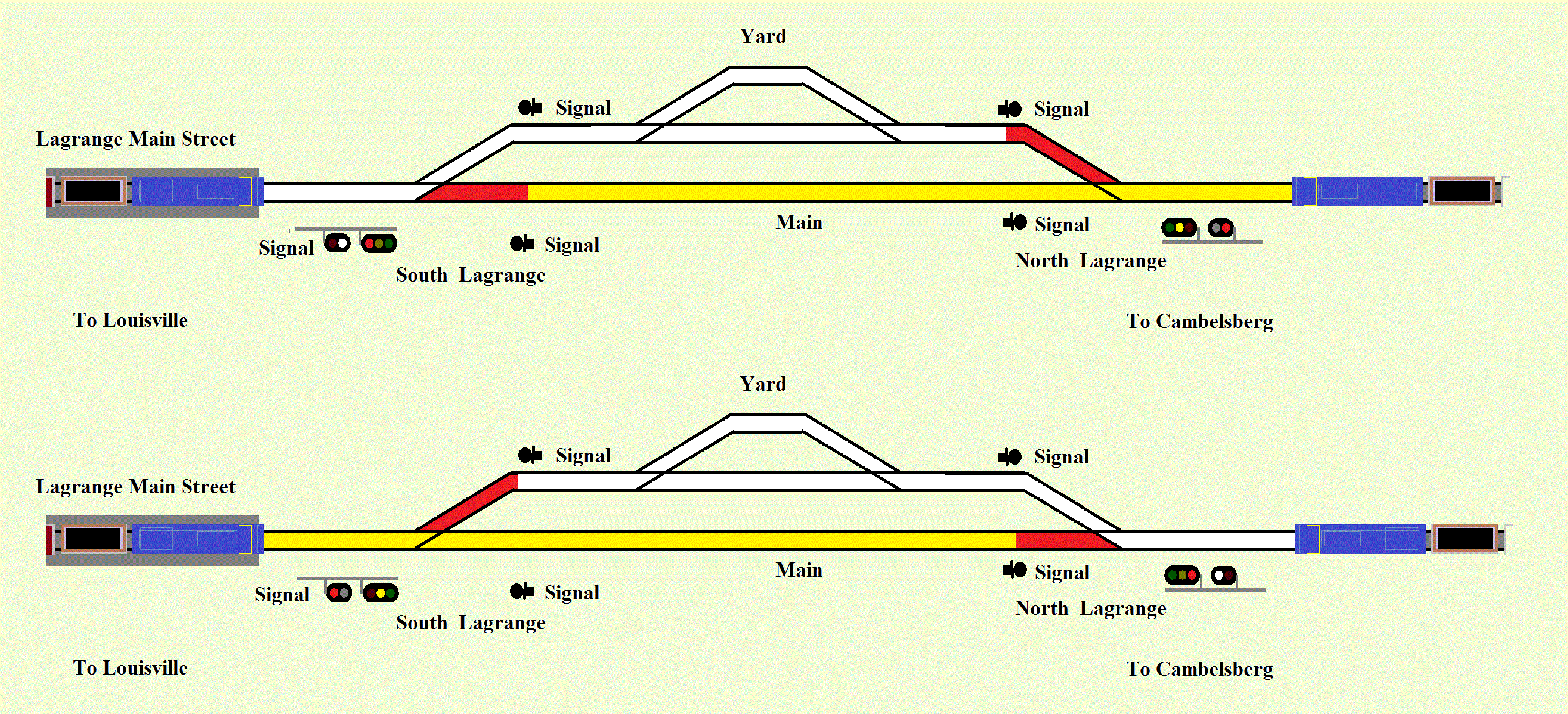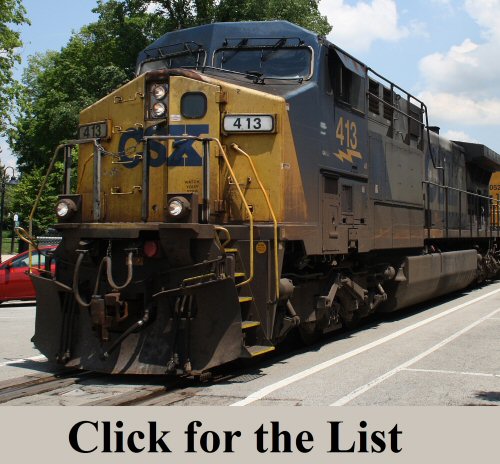
Signal Info
This is a FAQ about the signals at Lagrange - It is NOT a extensive look at American Railroad Signalling.
This section concentrates on the Signal we all see on the North Webcam.
The signal we see is one of six at Lagrange. Each signal has a purpose.
If I get more information on the other signals I will include them "later".
|
 |
StopRed over Red |
The train must stop at this signal. It is a Absolute signal protecting Lagrange Yard and mainline section of the station. A dispatcher can give permission to pass to a train, which will always be a exception and done at slow restrictive speed.

|
 |
CautionYellow over Red |
The train should slow down and prepared to stop at the next signal. The train will be on
the mainline. In this case the next signal is the departure from nth Lagrange. Sometimes this will mean
there is a train in the nth Lagrange - sth Cambelsberg section. Other times the dispatcher may have kept it red at the northern end either as a way to slow the train, stop the train (to wait for another) or just not thrown the signal yet.

|
 |
ProceedGreen over Red |
The train can proceed at the normal speed for this section. The train will be on
the mainline. In this case the next signal is the departure from nth Lagrange is also eithe Proceed or Caution so the train will not stop at Lagrange and proceed to Cambelsberg.

|
 |
RestrictiveRed over Lunar |
The train can proceed past this signal at a speed able to stop for any obsruction.
The train will be heading to the yard.

|
Meets |
When a train meets it means it will come to a passing point, be it a loop or yard, then
wait for the opposing train. At lagrange that can be done two ways. First is bringing the Southbound into
the yard, the second is on the main.
This means the trains have opposite signals directing them to enter lagrange in a safe manner.
Of course if one train enters the yard or on the main and clears the other end, the opposing train can continue non-stop. Of course if through the yard is slower !

|



